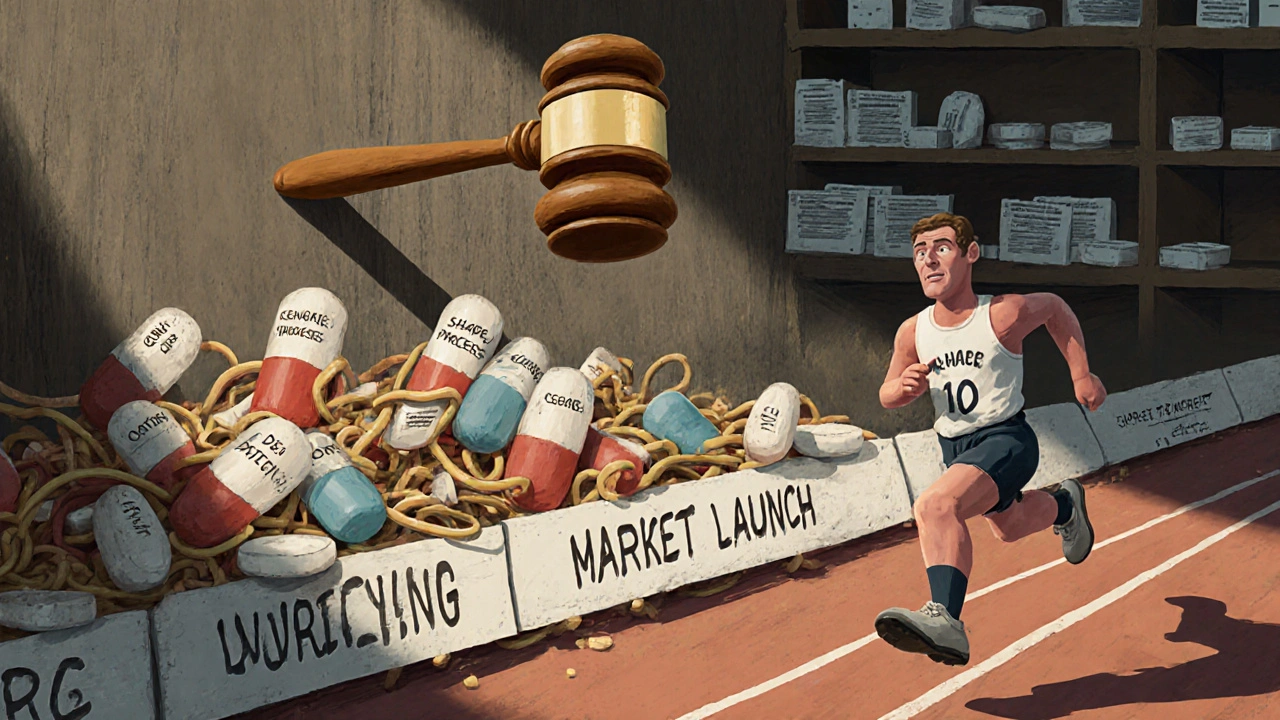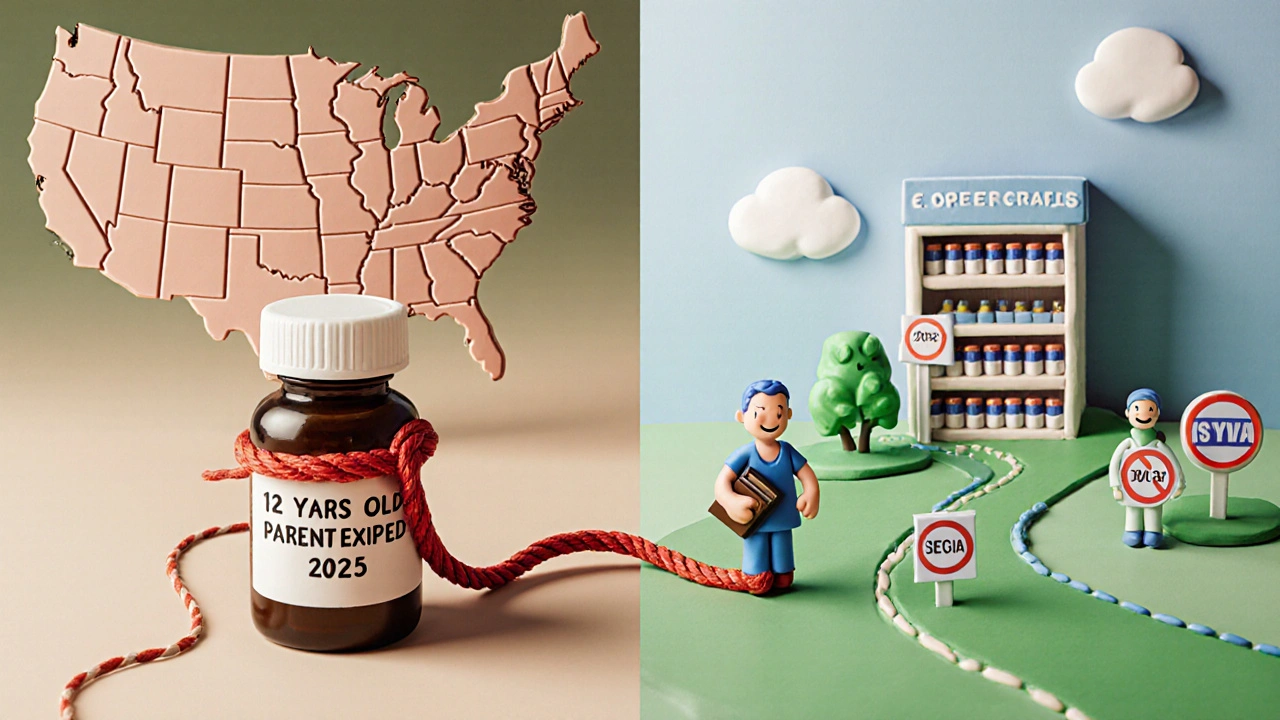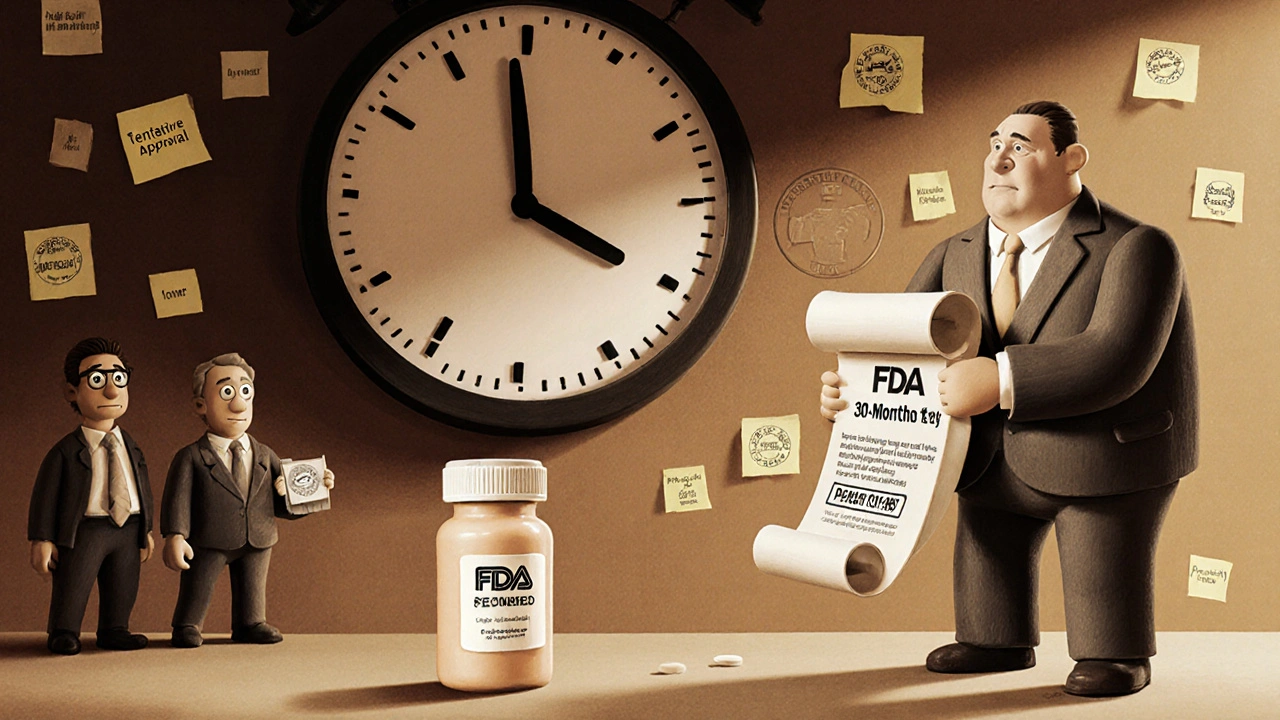When a brand-name drug company gets FDA approval for a new medicine, it gets a patent that blocks others from copying it. But under the Hatch-Waxman Act, generic drug makers can challenge those patents before they expire. Here’s where things get complicated: if the brand company sues, the FDA can’t approve the generic for up to 30 months. That’s the 30-month stay. It’s not a guarantee that the patent is valid. It’s not even a court ruling. It’s just a clock that starts ticking the moment the generic company files a legal challenge - and the brand company responds with a lawsuit.
How the 30-Month Stay Actually Works
The process starts when a generic manufacturer files an Abbreviated New Drug Application (ANDA) with the FDA. Part of that application includes a Paragraph IV certification. That’s a legal notice saying, ‘We think your patent is invalid or we don’t infringe it.’ The brand company gets 45 days to sue. If they do, the FDA hits pause on final approval. The clock starts from the day the last patent holder gets the notice. That’s it. No judge has ruled. No trial has happened. The FDA just stops approving the drug - even if it’s scientifically ready.
Here’s the catch: the FDA can still review the application. They can even give tentative approval. That means the generic drug passes all safety and quality checks. It’s ready to go. But it sits on the shelf until the 30 months are up - or the court decides the patent is invalid. In 2022, the FDA gave tentative approval to 78% of ANDAs that were caught in patent litigation. But only 782 out of 1,046 got final approval. The rest? Still waiting.
Why the 30-Month Stay Isn’t Really About 30 Months
Most people think the 30-month stay means generics come out 30 months after the lawsuit. That’s not true. The median time between the stay ending and the generic actually hitting shelves? 3.2 years. Why? Because the real delay isn’t the legal clock. It’s everything else.
Generic companies spend 6 to 9 extra months just preparing for litigation. Legal fees average $3-5 million per drug. Some companies wait to launch until they’re sure the brand won’t sue again on a different patent. Others delay because they need to scale up production. Or because they’re waiting for the first-mover advantage. The 180-day exclusivity for the first generic to challenge a patent creates a race - but also a gamble. If you’re first and you lose the lawsuit, you lose everything. So many wait.
And sometimes, the brand company doesn’t even need to win. They just need to drag it out. A 2021 study found that 78% of Paragraph IV cases ended in settlements - not court rulings. And those settlements often included deals where the generic agreed to delay launch until after the patent expired. That’s called a ‘pay-for-delay’ deal. The FTC called it anti-competitive. The brand companies call it a business arrangement.
Patent Evergreening: The Hidden Game
The 30-month stay wasn’t meant to be used like this. But it’s being used exactly like this. Brand companies file dozens of patents - not just on the drug itself, but on its coating, its pill shape, its manufacturing process. A 2019 Brookings study found that 67% of patents listed in the FDA’s Orange Book for top-selling drugs were filed after the original drug got approved. These are secondary patents. They don’t protect the science. They protect the market.
Each one of these patents can trigger a new 30-month stay - if the generic challenges it. But in 2003, Congress closed that loophole with the Medicare Modernization Act. Now, a brand company can only get one 30-month stay per ANDA applicant. But they still file multiple patents. And they still sue on one at a time. The generic company has to respond to each one. Each lawsuit adds months to the timeline. Each delay adds millions in lost revenue.
For example, a drug with five patents might face five separate lawsuits. Even if only one triggers a stay, the generic company has to prepare for all five. That’s why the average development timeline for a generic drug jumps from 18-36 months to 30-48 months when litigation is involved.

How Other Countries Do It Differently
The U.S. is the only country that ties drug approval directly to patent lawsuits. In the European Union, generic companies can apply as soon as data exclusivity ends. No court involvement. No 30-month pause. Canada has a 24-month stay - shorter than the U.S. And neither country has a 180-day exclusivity period for the first challenger.
That means generics enter markets faster abroad. In the U.S., the median time from patent expiration to generic launch is 3.2 years. In Europe, it’s often under 6 months. The difference isn’t just speed. It’s cost. Generic drugs in the U.S. save consumers 80-85% on average - but only after they finally arrive. The 30-month stay delays those savings.
Who Wins? Who Loses?
Brand companies say the 30-month stay is essential. Without it, they argue, no one would invest in new drugs. Scott Gottlieb, former FDA commissioner, says the system has saved consumers $2.2 trillion since 1984. That’s true. Over 14,000 generics have been approved. But the FTC says the system also costs $13.9 billion a year in delayed savings.
For patients, the delay means paying hundreds or thousands more for a drug they could get for pennies. For insurers, it means higher premiums. For taxpayers, it means higher Medicare and Medicaid costs. For generic companies, it means billions spent on lawyers instead of R&D.
Meanwhile, the FDA keeps approving drugs. In 2022, they processed 1,046 ANDAs. But only 782 got final approval. The rest? Still stuck. And the backlog keeps growing.

What’s Changing? What’s Next?
Pressure is building. In 2023, Congress introduced the Affordable Prescriptions for Patients Act. It proposes cutting the 30-month stay to 18 months. And it bans stays for secondary patents. The FDA also proposed new rules to make Orange Book listings more accurate - so companies can’t list patents that don’t actually protect the drug.
Industry analysts predict that if these reforms pass, $78 billion worth of branded drugs could face generic competition by 2028. That could save consumers $195 billion. But brand companies warn it would cut R&D investment by $14 billion a year - and delay 24-36 new drugs over the next decade.
The truth? The 30-month stay was meant to be a bridge - not a wall. It was supposed to let generics in quickly once the patent was truly expired. Instead, it’s become a tool for delay. And every month that passes, more patients pay more for drugs that could be cheaper.
The system isn’t broken. It’s being used exactly as it was designed - just not the way Congress intended.
Real-World Impact: A Case in Point
Take a common blood pressure drug. Approved in 2015. Patent expires in 2025. A generic company files a Paragraph IV challenge in 2022. The brand sues. The 30-month stay kicks in. The FDA gives tentative approval in 2024. But the court case drags on. The brand files a second patent - a different coating - and sues again. The generic company waits. They’re not sure if the second lawsuit will block launch. They spend another year preparing. The stay ends in 2026. But they don’t launch until 2027. The drug is now 12 years old. The patent expired in 2025. The patient waited two extra years to get the generic. That’s not a glitch. That’s the system.
What triggers the 30-month stay?
The 30-month stay is triggered when a generic drug company files a Paragraph IV certification challenging a patent listed in the FDA’s Orange Book, and the brand-name manufacturer files a patent infringement lawsuit within 45 days of receiving that notice. The FDA then automatically delays final approval of the generic drug for up to 30 months - regardless of whether the patent is valid.
Does the FDA approve the generic during the 30-month stay?
Yes - but only tentatively. The FDA can and does review generic applications during the stay. If the drug meets all safety, quality, and efficacy standards, the agency grants tentative approval. This means the drug is ready to launch the moment the stay ends or the patent is invalidated. In 2022, 78% of ANDAs under litigation received tentative approval.
Can the 30-month stay be extended beyond 30 months?
Yes. If the court doesn’t resolve the lawsuit within 30 months, the stay can continue until a decision is made. Courts can also shorten it if they find the lawsuit was filed in bad faith. But in practice, most stays last the full 30 months - or longer if multiple lawsuits are filed.
What’s the difference between a 30-month stay and regulatory exclusivity?
Regulatory exclusivity is a time period granted by the FDA that blocks generics regardless of patents - like the 5-year exclusivity for new chemical entities. The 30-month stay is triggered by patent litigation and only applies to drugs with listed patents. The two can overlap. For example, a drug with 5-year exclusivity and a 30-month stay can be blocked for up to 40 months total.
Why do generic companies still file Paragraph IV certifications if the process is so slow?
Because the first generic to successfully challenge a patent gets 180 days of market exclusivity - during which no other generic can enter. That’s worth billions. Even with legal costs and delays, the payoff is huge. In 2022, 72% of drugs facing generic challenges had multiple Paragraph IV filers - all racing to be first.
Are there efforts to change the 30-month stay system?
Yes. The Affordable Prescriptions for Patients Act of 2023 proposes reducing the stay to 18 months and banning it for secondary patents. The FTC and FDA are also pushing for stricter rules on patent listings in the Orange Book. Industry surveys show 67% of executives expect major changes within five years, driven by bipartisan pressure to lower drug prices.

